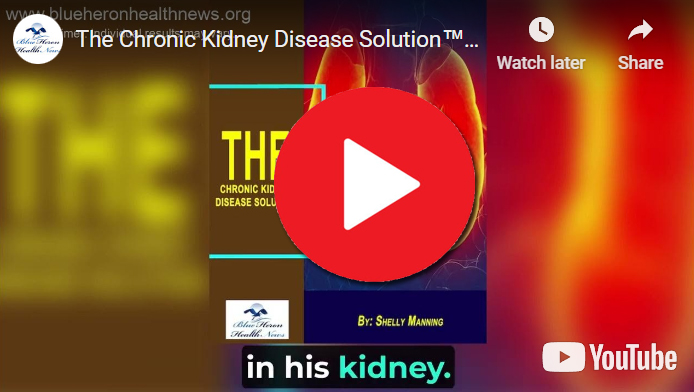
The Chronic Kidney Disease Solution™ by Shelly Manning It is an eBook that includes the most popular methods to care and manage kidney diseases by following the information provided in it. This easily readable eBook covers up various important topics like what is chronic kidney disease, how it is caused, how it can be diagnosed, tissue damages caused by chronic inflammation, how your condition is affected by gut biome, choices for powerful lifestyle and chronic kidney disease with natural tools etc.
What are the side effects of dialysis?
Dialysis, while life-saving for individuals with end-stage renal disease (ESRD), can have a range of side effects and complications. These side effects can vary depending on the type of dialysis—hemodialysis (HD) or peritoneal dialysis (PD)—and the individual’s overall health. Here is a detailed overview of the potential side effects of dialysis:
Side Effects of Hemodialysis (HD)
1. Hypotension (Low Blood Pressure):
- Cause: Rapid removal of fluids during dialysis can lead to a sudden drop in blood pressure.
- Symptoms: Dizziness, lightheadedness, nausea, vomiting, and in severe cases, fainting.
- Management: Adjusting fluid removal rates, using medications, and carefully monitoring fluid intake between sessions.
2. Muscle Cramps:
- Cause: Changes in fluid and electrolyte balance during dialysis.
- Symptoms: Painful cramps, often in the legs.
- Management: Adjusting dialysis parameters, ensuring adequate hydration, and using medications if necessary.
3. Itching (Pruritus):
- Cause: Accumulation of waste products that are not fully removed by dialysis, dry skin, or high levels of phosphorus.
- Symptoms: Generalized itching, which can be severe and uncomfortable.
- Management: Moisturizers, phosphate binders, and antihistamines.
4. Fatigue:
- Cause: The dialysis process itself can be exhausting, along with the underlying chronic kidney disease.
- Symptoms: Feeling unusually tired or weak.
- Management: Ensuring adequate nutrition, managing anemia, and possibly adjusting the dialysis schedule.
5. Infections:
- Cause: Bacterial entry through the vascular access site.
- Symptoms: Redness, swelling, pain, fever, and chills.
- Management: Maintaining strict hygiene, regular monitoring of the access site, and prompt treatment with antibiotics.
6. Blood Clots:
- Cause: Clotting in the vascular access, such as an AV fistula or graft.
- Symptoms: Swelling, reduced blood flow during dialysis.
- Management: Use of anticoagulants, surgical intervention to remove clots.
7. Arrhythmias (Irregular Heartbeats):
- Cause: Electrolyte imbalances, particularly potassium.
- Symptoms: Palpitations, irregular heartbeat, chest pain.
- Management: Close monitoring of electrolyte levels, adjusting dialysate composition.
8. Dialysis Disequilibrium Syndrome:
- Cause: Rapid removal of urea during dialysis, leading to an osmotic gradient that causes fluid to shift into the brain.
- Symptoms: Headache, nausea, vomiting, confusion, and in severe cases, seizures.
- Management: Slower dialysis initiation and careful monitoring.
Side Effects of Peritoneal Dialysis (PD)
1. Peritonitis:
- Cause: Infection of the peritoneal cavity, often due to contamination during exchanges.
- Symptoms: Abdominal pain, fever, cloudy dialysate, nausea, and vomiting.
- Management: Immediate antibiotic treatment, strict aseptic technique during exchanges.
2. Catheter-Related Infections:
- Cause: Infection at the site where the catheter exits the skin.
- Symptoms: Redness, pain, swelling, discharge.
- Management: Topical or systemic antibiotics, proper catheter care.
3. Hernias:
- Cause: Increased intra-abdominal pressure from the dialysate fluid.
- Symptoms: Bulging area in the abdomen, pain, discomfort.
- Management: Surgical repair, managing dialysate volume.
4. Protein Loss:
- Cause: Loss of proteins into the dialysate fluid.
- Symptoms: Malnutrition, muscle wasting, weakness.
- Management: Dietary adjustments to increase protein intake.
5. Weight Gain:
- Cause: Absorption of glucose from the dialysate.
- Symptoms: Increase in body weight, potential for increased blood sugar levels.
- Management: Monitoring and managing diet, using lower glucose concentration dialysate.
6. Abdominal Discomfort:
- Cause: Presence of dialysate fluid in the abdominal cavity.
- Symptoms: Feeling of fullness, bloating, pain.
- Management: Adjusting dialysate volume, ensuring proper catheter placement.
7. Encapsulating Peritoneal Sclerosis (EPS):
- Cause: A rare but serious complication where the peritoneum becomes thickened and scarred.
- Symptoms: Severe abdominal pain, malnutrition, bowel obstruction.
- Management: Discontinuation of PD, switching to hemodialysis, surgical intervention if necessary.
General Side Effects Common to Both Types
1. Electrolyte Imbalances:
- Cause: Removal of or inadequate exchange of electrolytes during dialysis.
- Symptoms: Muscle weakness, cramping, irregular heartbeats.
- Management: Regular monitoring, adjusting dialysate composition.
2. Anemia:
- Cause: Reduced erythropoietin production by the kidneys, blood loss during dialysis.
- Symptoms: Fatigue, pallor, shortness of breath.
- Management: Erythropoiesis-stimulating agents (ESAs), iron supplements.
3. Bone and Mineral Disorders:
- Cause: Imbalance in calcium, phosphate, and parathyroid hormone levels.
- Symptoms: Bone pain, fractures, calcifications in tissues.
- Management: Phosphate binders, vitamin D supplements, dietary modifications.
4. Emotional and Psychological Impact:
- Cause: The chronic nature of kidney disease and the demands of dialysis.
- Symptoms: Depression, anxiety, stress.
- Management: Counseling, support groups, mental health services.
Conclusion
Dialysis, while essential for patients with end-stage renal disease, comes with a range of potential side effects. These can vary depending on the type of dialysis and the individual patient’s condition. Proper management, regular monitoring, and preventive measures can help mitigate these side effects and improve the quality of life for dialysis patients. Collaboration with healthcare providers, adherence to treatment plans, and lifestyle adjustments are crucial for managing the challenges associated with dialysis. If you or a loved one is undergoing dialysis, it is important to communicate any concerns or symptoms with the healthcare team to ensure comprehensive care and support.
The Chronic Kidney Disease Solution™ by Shelly Manning It is an eBook that includes the most popular methods to care and manage kidney diseases by following the information provided in it. This easily readable eBook covers up various important topics like what is chronic kidney disease, how it is caused, how it can be diagnosed, tissue damages caused by chronic inflammation, how your condition is affected by gut biome, choices for powerful lifestyle and chronic kidney disease with natural tools etc.
